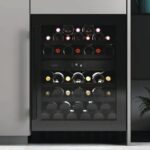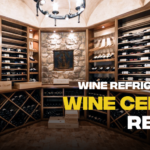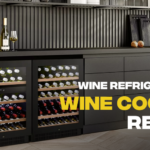Viking Wine Cooler Condensation Buildup
Post Date: June 11, 2024

Excessive condensation can lead to water pooling, mold growth, and even damage to the appliance’s components. This comprehensive guide will delve into the causes of condensation buildup in your Viking wine cooler, provide detailed DIY solutions to address the problem, and outline preventive measures to safeguard your appliance from future condensation issues.
Condensation is a natural phenomenon that occurs when warm, moist air comes into contact with a cooler surface. In the context of a wine cooler, condensation buildup can be attributed to several factors:
-
Door Opening Frequency: Frequent opening and closing of the wine cooler door introduces warm, humid air from the surrounding environment, which can condense on the cooler surfaces.
-
Improper Door Seal: A faulty or damaged door seal can allow warm air to leak into the wine cooler, contributing to condensation buildup.
-
High Ambient Humidity: If the surrounding environment is particularly humid, the higher moisture content in the air can more easily condense on the cooler surfaces of the wine cooler.
-
Ventilation Issues: Inadequate ventilation around the wine cooler can trap warm, humid air, increasing the likelihood of condensation.
-
Overcrowding: An overcrowded wine cooler can restrict air circulation, leading to pockets of warm air that are more prone to condensation.
DIY Solutions for Condensation Buildup
Before calling a professional technician, there are several DIY solutions you can attempt to tackle condensation buildup in your Viking wine cooler:
-
Reduce Door Opening Frequency: Minimize the number of times you open and close the wine cooler door. This simple step can significantly reduce the introduction of warm, humid air.
-
Inspect and Clean Door Seal: Carefully examine the door seal for any signs of wear, damage, or gaps. If the seal appears compromised, clean it thoroughly with a mild detergent and water. If the seal is damaged, consider replacing it with a new one.
-
Control Ambient Humidity: If possible, use a dehumidifier in the area surrounding the wine cooler to lower the overall humidity level. This can help reduce the amount of moisture available for condensation.
-
Enhance Ventilation: Ensure the wine cooler has adequate ventilation by providing at least 2-3 inches of clearance on all sides and back of the appliance. Avoid placing the wine cooler in tight enclosures or against walls.
-
Optimize Wine Cooler Loading: Arrange the wine bottles within the cooler to allow for proper air circulation. Avoid overcrowding and ensure there are no obstructions blocking airflow vents.
-
Check for Drainage Issues: Some Viking wine coolers have a drain hole to collect condensation. If this drain hole is clogged or obstructed, it can lead to water pooling and condensation buildup. Clean the drain hole and ensure it is free of debris.
-
Monitor Temperature Settings: Ensure the wine cooler’s temperature setting is appropriate for the type of wine you are storing. Excessively cold temperatures can promote condensation.
-
Wipe Away Excess Condensation: Regularly wipe down the interior and exterior surfaces of the wine cooler with a dry cloth to remove excess condensation. This helps prevent mold growth and water damage.
Preventive Measures to Minimize Condensation
To minimize the risk of condensation buildup in your Viking wine cooler, follow these preventive measures:
-
Strategic Placement: Install the wine cooler in a location with consistent temperature and humidity levels, avoiding direct sunlight or extreme heat sources.
-
Regular Maintenance: Schedule regular professional maintenance checkups to ensure the wine cooler is operating optimally and identify potential issues early on.
-
Proper Cleaning: Regularly clean the wine cooler’s interior and exterior, including the door seal and drain hole, to prevent dust and debris buildup.
-
Monitor Door Seal Condition: Periodically inspect the door seal for any signs of wear or damage. Replace the seal if necessary to maintain a tight seal.
-
Address Humidity Concerns: If the surrounding environment is consistently humid, consider using a dehumidifier to control moisture levels.
-
Optimal Loading Practices: Avoid overcrowding the wine cooler and ensure there is adequate air circulation among the bottles.
-
Appropriate Temperature Settings: Set the wine cooler’s temperature to a level appropriate for the type of wine you are storing.
-
Prompt Condensation Removal: Wipe away excess condensation from the interior and exterior surfaces of the wine cooler on a regular basis.
Condensation buildup in a Viking wine cooler can be an unsightly and potentially harmful issue. By understanding the causes, implementing DIY solutions, and following preventive measures, you can effectively address condensation problems and maintain your





